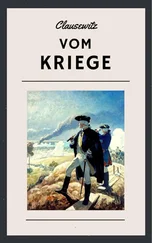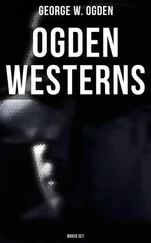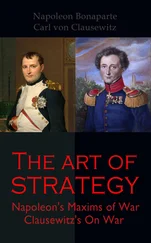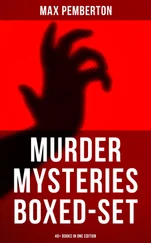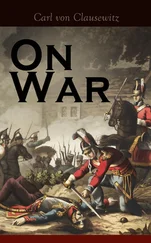Blankets made of sheep's wool may be white, purely red, or as red as a lotus flower. They may be made of worsted threads by sewing (khachita); or may be woven of woollen threads of various colour (vánachitra); or may be made of different pieces (khandasanghátya); or may be woven of uniform woollen threads (tantuvichchhinna).
Woollen blankets are (of ten kinds):—Kambala, Kauchapaka, Kulamitika, Saumitika, Turagastarana, Varnaka, Talichchhaka, Váravána, Paristoma, and Samantabhadraka.
Of these, that which is slippery (pichchhila) as a wet surface, possessed of fine hair, and soft, is the best.
That (blanket) which is made up of eight pieces and black in colour is called Bhingisi used as rain-proof; likewise is Apasáraka; both are the products of Nepal.
Samputika, Chaturasrika, Lambara, Katavánaka, Praváraka, and Sattalika are (blankets made of) the wool of wild animals.
That which is manufactured in the country, Vanga (vangaka) is a white and soft fabric (dukúla); that of Pándya manufacture (Paundraka) is black and as soft as the surface of a gem; and that which is the product of the country, Suvarnakudya, is as red as the sun, as soft as the surface of the gem, woven while the threads are very wet, and of uniform (chaturasra) or mixed texture (vyámisravána).
Single, half, double, treble and quadruple garments are varieties of the same.
The above will explain other kinds of fabrics such as Kásika, Benarese products, and Kshauma which is manufactured in Pándya (Paundraka).
Mágadhika (product of the Magadha country), Paundraka, and Sauvarnakudyaka are fibrous garments.
Nágavriksha (a species of a tree), Likucha (Artocarpus Lakucha), and Vakula (Mimusops Elengi), and Vata (Ficus Indica) are the sources (of their fibres).
That of Nágavriksha is yellow (pita); that of Likucha is of the colour of wheat; that of Vakula is white; and the rest is of the colour of butter.
Of these, that which is produced in the country of Suvarnakudya is the best.
The above will explain the fabrics known as kauseya, silk-cloth, and chinapatta, fabrics of China manufacture.
Of cotton fabrics, those of Madhura, of Aparánta, western parts, of Kálinga, of Kási, of Vanga, of Vatsa, and of Mahisha are the best.
As to other kinds of gems (which are not treated of here), the superintendent shall ascertain their size, their value, species, form, utility, their treatment, the repair of old ones, any adulteration that is not easily detected, their wear and tear due to lapse of time and place, as well as remedies against those which are inauspicious (himsra).
[Thus ends Chapter XI, "Examination of Gems that are to be entered into the Treasury," in Book II, "The Duties of Government Superintendents" of the Arthasástra of Kautilya. End of thirty-second chapter from the beginning.]
CHAPTER XII. CONDUCTING MINING OPERATIONS AND MANUFACTURE.
Table of Contents
POSSESSED of the knowledge of the science dealing with copper and other minerals (Sulbádhátusástra), experienced in the art of distillation and condensation of mercury (rasapáka) and of testing gems, aided by experts in mineralogy and equipped with mining labourers and necessary instruments, the superintendent of mines shall examine mines which, on account of their containing mineral excrement (kitta), crucibles, charcoal, and ashes, may appear to have been once exploited or which may be newly discovered on plains or mountain-slopes possessing mineral ores, the richness of which can be ascertained by weight, depth of colour, piercing smell, and taste.
Liquids which ooze out from pits, eaves, slopes, or deep excavations of well-known mountains; which have the colour of the fruit of rose-apple (jambu), of mango, and of fanpalm; which are as yellow as ripe turmeric, sulphurate of arsenic (haritála), honey-comb, and vermilion; which are as resplendent as the petals of a lotus, or the feathers of a parrot or a peacock; which are adjacent to (any mass of) water or shrubs of similar colour; and which are greasy (chikkana), transparent (visada), and very heavy are ores of gold (kánchanika). Likewise liquids which, when dropped on water, spread like oil to which dirt and filth adhere, and which amalgamate themselves more than cent per cent (satádupari veddhárah) with copper or silver.
Of similar appearance as the above (tatpratirúpakam), but of piercing smell and taste is Bitumen.
Those ores which are obtained from plains or slopes of mountains; which are either yellow or as red as copper or reddish yellow; which are disjoined and marked with blue lines; which have the colour of black beans (masha, Phraseolus Radiatus), green beans (mudga, Phraseolus Mungo), and sesamum; which are marked with spots like a drop of curd and resplendent as turmeric, yellow myrobalan, petals of a lotus, acquatic plant, the liver or the spleen; which possess a sandy layer within them and are marked with figures of a circle or a svastika; which contain globular masses (sagulika); and which, when roasted do not split, but emit much foam and smoke are the ores of gold (suvarnadhátavah), and are used to form amalgams with copper or silver (pratívápárthasté stámrarúpyavedharáh).
Those ores which have the colour of a conch-shell, camphor, alum, butter, a pigeon, turtle-dove, Vimalaka (a kind of precious stone), or the neck of a peacock; which are as resplendent as opal (sasyaka), agate (gomédaka), cane-sugar (guda), and granulated sugar (matsyandika) which has the colour of the flower of kovidára (Bauhinia Variegata), of lotus, of patali (Bignonia Suaveolens), of kalaya (a kind of phraseolus), of kshauma (flax), and of atasi (Dinuin Usitatissimum); which may be in combination with lead or iron (anjana); which smell like raw meat, are disjoined gray or blackish white, and are marked with lines or spots; and which, when roasted, do not split, but emit much foam and smoke are silver ores.
The heavier the ores, the greater will be the quantity of metal in them (satvavriddhih).
The impurities of ores, whether superficial or inseparably combined with them can be got rid of and the metal melted when the ores are (chemically) treated with Tikshna urine (mútra) and alkalies (kshára), and are mixed or smeared over with the mixture of (the powder of) Rajavriksha (Clitoria Ternatea), Vata (Ficus Indica), and Pelu (Carnea Arborea), together with cow's bile and the urine and dung of a buffalo, an ass and an elephant.
(Metals) are rendered soft when they are treated with (the powder of) kandali (mushroom), and vajrakanda, (Antiquorum) together with the ashes of barley, black beans, palása (Butea Frondosa), and pelu (Carnea Arborea), or with the milk of both the cow and the sheep. Whatever metal is split into a hundred thousand parts is rendered soft when it is thrice soaked in the mixture made up of honey (madhu), madhuka (Bassia Latifolia), sheep's milk, sesamum oil, clarified butter, jaggery, kinva (ferment) and mushroom.
Permanent softness (mridustambhana) is also attained when the metal is treated with the powder of cow's teeth and horn.
Those ores which are obtained from plains or slopes of mountains; and which are heavy, greasy, soft, tawny, green, dark, bluish-yellow (harita), pale-red, or red are ores of copper.
Those ores which have the colour of kákamechaka (Solanum Indica), pigeon, or cow’s bile, and which are marked with white lines and smell like raw meat are the ores of lead.
Those ores which are as variegated in colour as saline soil or which have the colour of a burnt lump of earth are the ores of tin.
Those ores which are of orange colour (kurumba), or pale-red (pándurohita), or of the colour of the flower of sinduvára (Vitex Trifolia) are the ores of tíkshna.
Those ores which are of the colour of the leaf of kánda (Artemisia Indica) or of the leaf of birch are the ores of vaikrintaka.
Читать дальше

